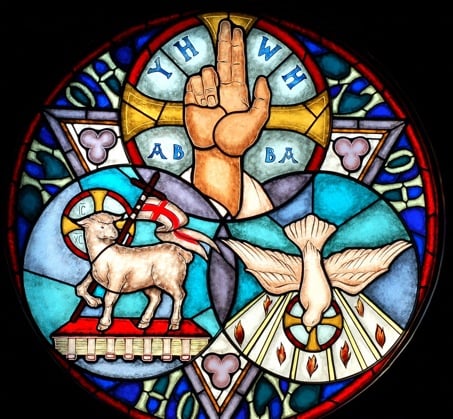A Carpet of Water Lilies

In the previous page I displayed some of the water lilies associated with the names 'Jesus Christ', 'Jesus the Messiah', 'Word' and their Hebrew and Greek equivalents. As we stroll around the pond we also find flowers and pads symbolising of the first and third Persons of the Trinity.
All of these geometric figures are shown on the water lily Template from which they have been cut, shown here again for reference.
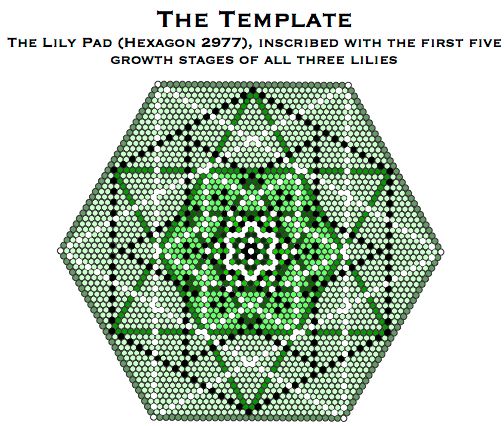
The Holy Spirit
The designation 'Jesus the Messiah' can be displayed as a star hexagram on the Lily Pad. If we extend the star hexagram to a centred triangle, we encounter the Holy Spirit.
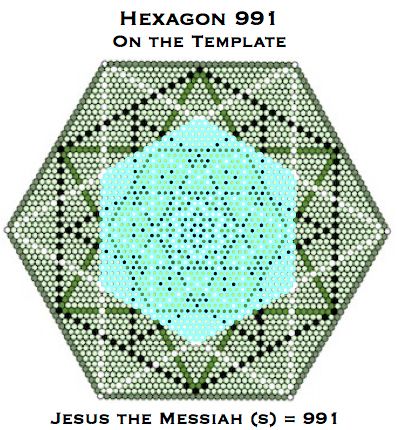
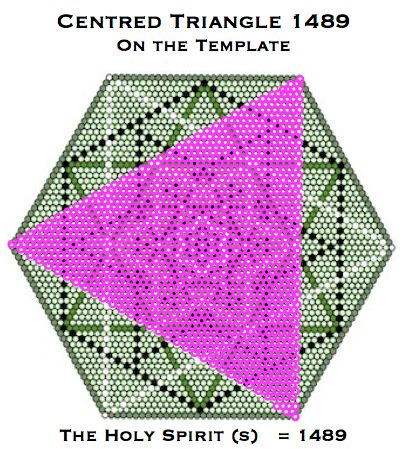
Addendum:
I recently made the spectacular discovery that the template backgrounds of the above figures are the combined values of 'Jesus of Nazareth' and 'Holy Spirit'. So we have
| Jesus the Messiah (s) | = 991 | ||
| Jesus of Nazareth (c) | = 1986 | ||
| Sum | = 2977 | Lily Pad Template | |
| The Holy Spirit (s) | = 1489 | ||
| Holy Spirit (c) | = 1488 | ||
| Sum | = 2977 | Lily Pad Template |
The following figures display these and other new findings on the lily pad.
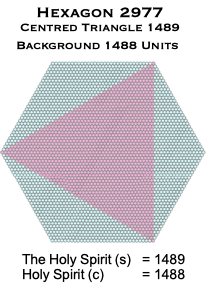
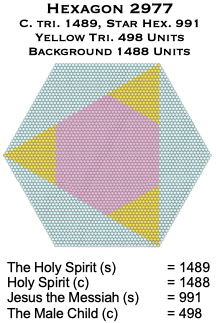
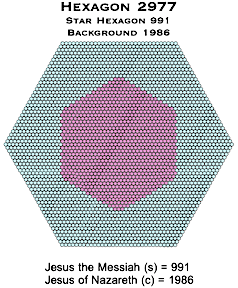
The next image displays 1986 as an antisnowflake ring, the first iteration of the Creatio function discussed in the Creation Snowflake, beginning this time with hexagon 331 and with a space for hexagram 661.
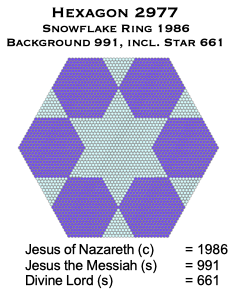
The Hebrew name Ruach Kodesh means 'Holy Spirit'. [2] This is found as a hexagonal ring cut from star hexagon 991, with snowflake 373 remaining.
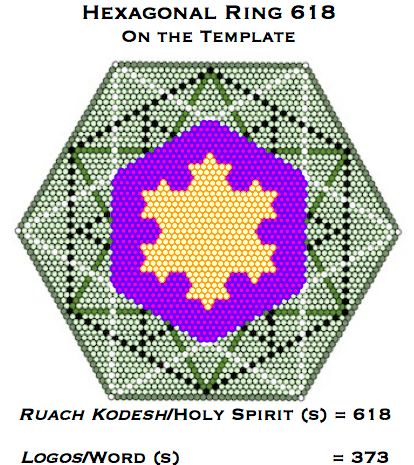
The Greek name To Hagion Pneuma means 'the Holy Spirit' and is also found as a star-hexagonal ring associated with star hexagon 991, this time as the difference between star hex. 2071 and star hex. 991, both prominent on the Template.
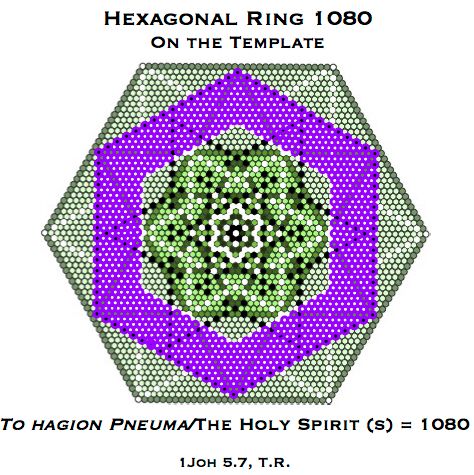
The Holy Spirit and Jesus Christ
Placing the hexagonal ring on the Template automatically encircles star hexagon 991, and creates six triangular sections of 151 units. [3] This yields a stunning confluence of numerical values for the second and third Persons of the Trinity.
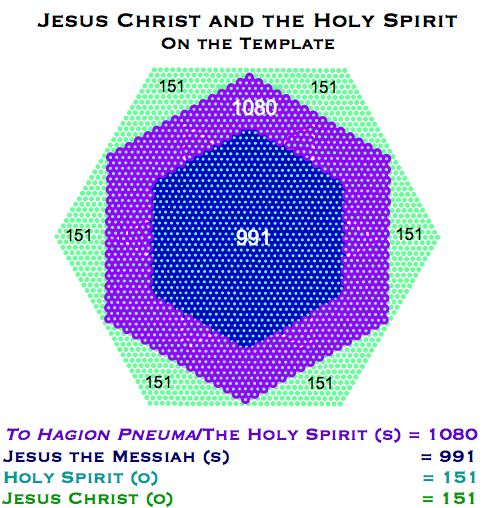
The first mention of the Holy Spirit is in Genesis 1.2, where it is introduced as 'the spirit of God'.
Now the earth was formless and empty, darkness was over the surface of the deep and the spirit of God was hovering over the waters. (Genesis 1.2 NIV '84)
In the previous page I showed how merging the star hexagram and star hexagon representing 'Jesus Christ' and Jesus the Messiah' produced a double star representing two scriptural titles for the Lord: 'Lion of the Tribe of Judah' and 'The Sovereign Lord'. The original Hebrew words translated as 'the spirit of God' are Ruach Elohim. [1] The standard values of the title 'the spirit of God' in English and Hebrew are once again found as hexagonal rings on the Template, one of which surrounds that double star, the other surrounding a star hexagon representing another scriptural title for Jesus.
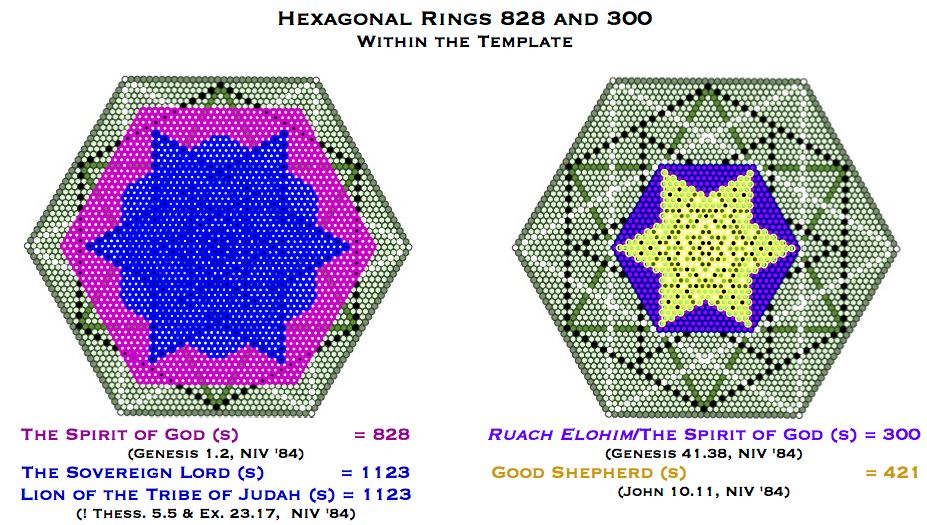
In Greek the equivalent phrase is Pneuma tov Theou, first found in Matthew 3.16 and with a standard value of 1830.
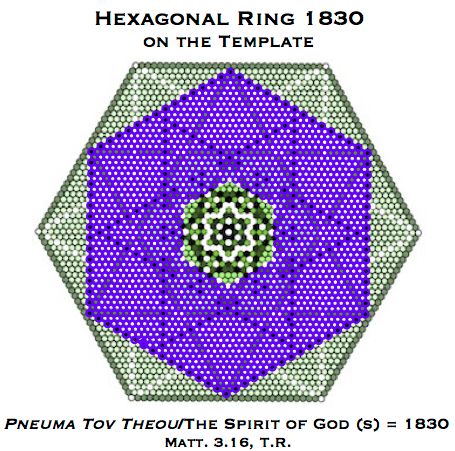
Notice how many of these shapes are hexagonal rings. The ring shape conveys the image of the Holy Spirit as an enveloping comforter and also as the primal symbol 'O', the most perfect of forms and home of the transcendental number pi , already a signifcant part of the code. The hexagon, hexagram and snowflakes represent physical manifestation and growth.
These last figures are cut from hexagons 1951 and 721. Hexagon 721 is prominently on display on the Template, but 1951 is an 'intersectional' hexagon, bounded by the outermost intersection points on the Template, which are between star hexagram 1987 (outlined in white) and star hexagon 2071 (outlined in black). This has already given rise to some exotic flora. The next section displays perhaps the most spectacular of all.
The Lord God
To encounter the first person of the Trinity we initially turn to trefoil 754, beautifully symbolisingYehoshua HaMashiach. as a trefoil of hexagrams - three conjoined Star of Davids!
Here it is again, inscribed within hexagon 1951, which is bounded by the outermost intersection points within the Template and shown in red. The largest triangle that can be inscribed within hexagon 1951 is triangle 703, suggested by the shape of trefoil 754 and within which can be inscribed another trefoil of hexagrams, representing the Hebrew Mashiach/Messiah.
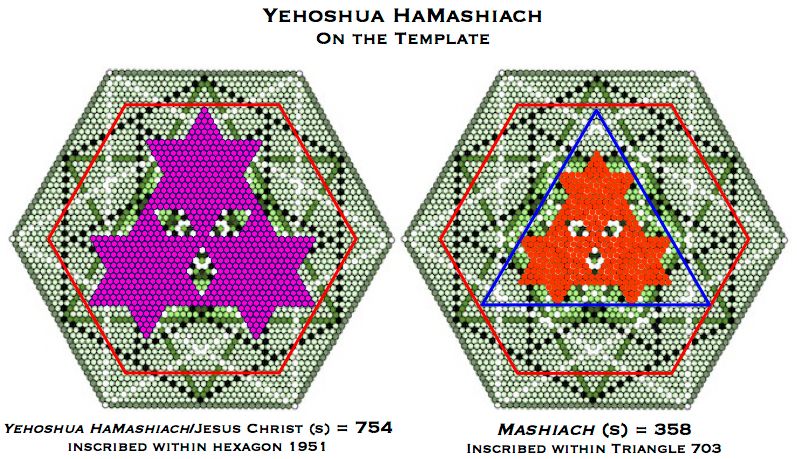
For further details see The Alpha and the Omega.
Triangle 703 can self-intersect to create hexagram 937, which touches the outer ring of hexagon 1951 at every point. This is the setting for a very special Star of David.
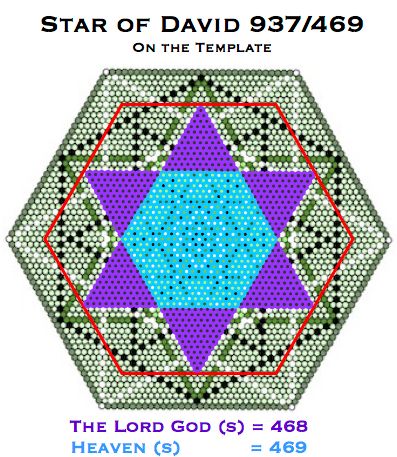
This shining star is encoded within the Creation Triangle in the Hebrew Genesis 1.1. [4] It also holds the ordinal and reduced values of the same formal designation for our Creator, and more titles for His Son.
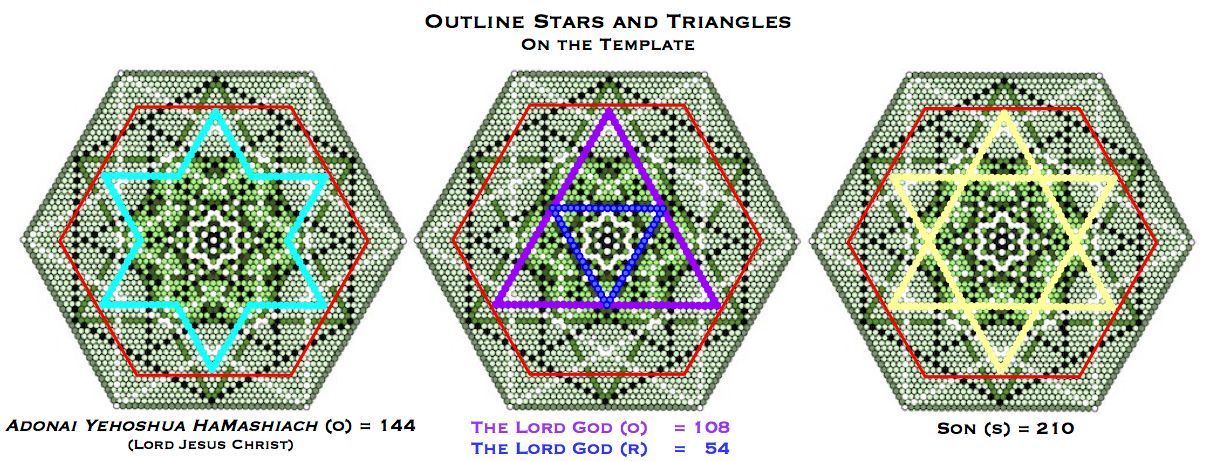
The Greek Kurios Theos, which means 'The Lord God' or 'God is the Lord' (Ps. 117.27, Sept.), can be shown on the Template when rhombus 867, representing 'the Word', is highlighted within intersectional hexagon 1951, which it fits precisely.
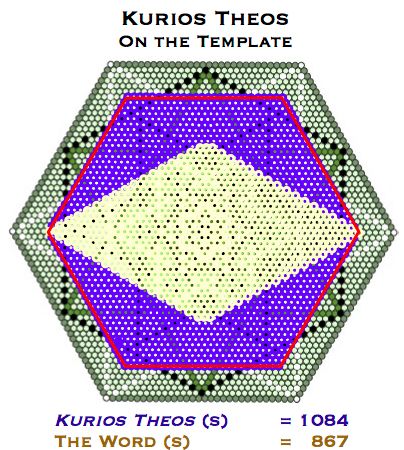
The Hebrew YHVH Elohim/The LORD God can also be displayed on the Lily Pad in two forms, both coordinating with the Star of Israel, which fits inside another intersectional hexagon.
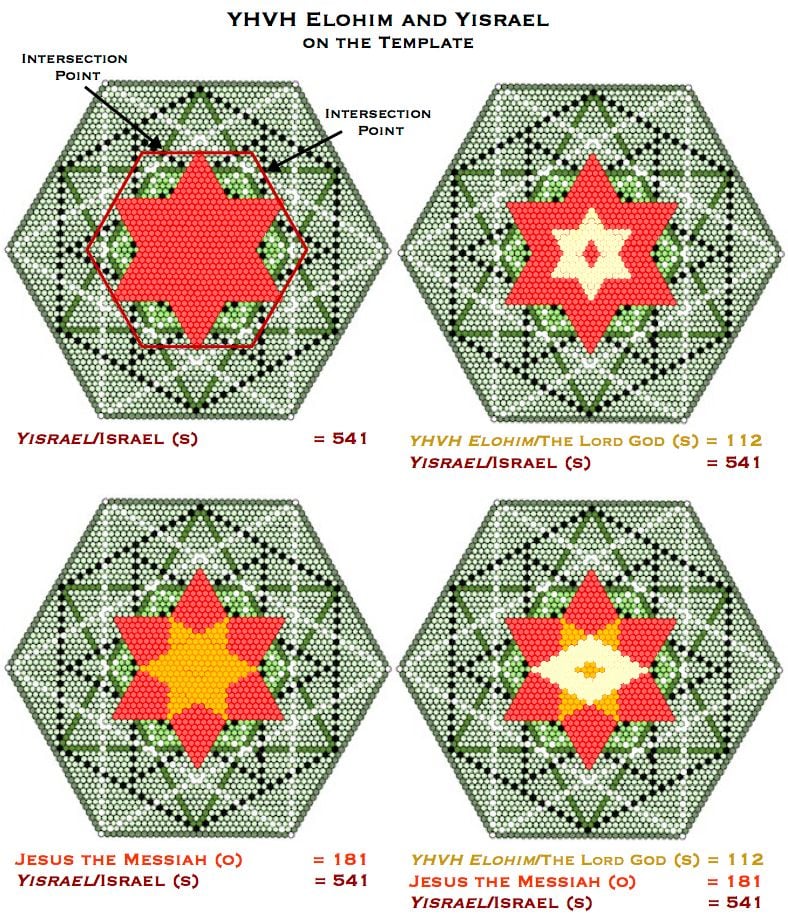
The Creation Snowflake is the product of three iterations of what I call the 'Creation function', which gives rise to alternating Koch snowflakes and antisnowflakes and encoded within the first two verses of the NIV Bible. It fits perfectly on the Template, where it yields another name of God when we cut from it star hexagon 925, representing 'Jesus Christ'. [5]
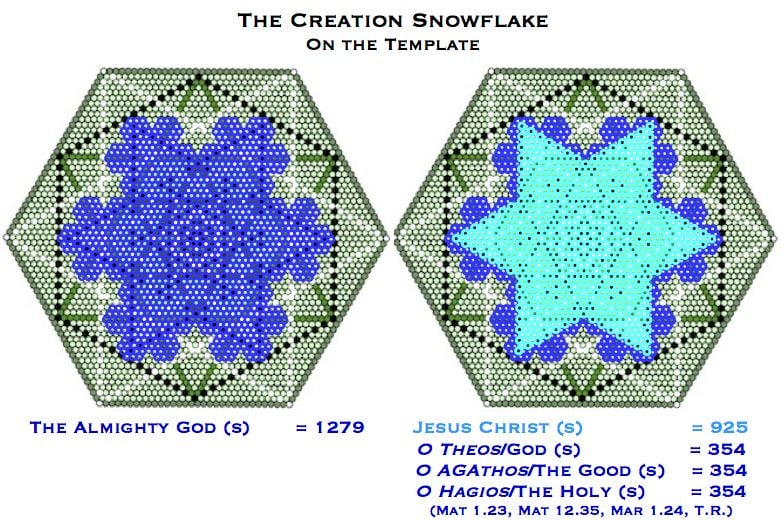
If we draw only the outline of each growth stage of the lily pad, then add radial lines to connect them to the centre, we find another title for the Holy One, from
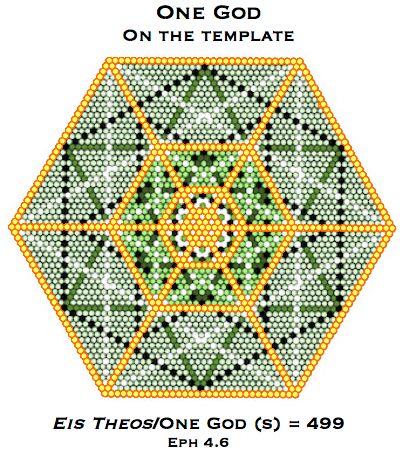
The Creator
Finally, I would like to show you two versions of a proclamation that reveals the origin of the code. These statements are given added weight by the fact that all three systems of numeration yield fundamental geometry from the Template.
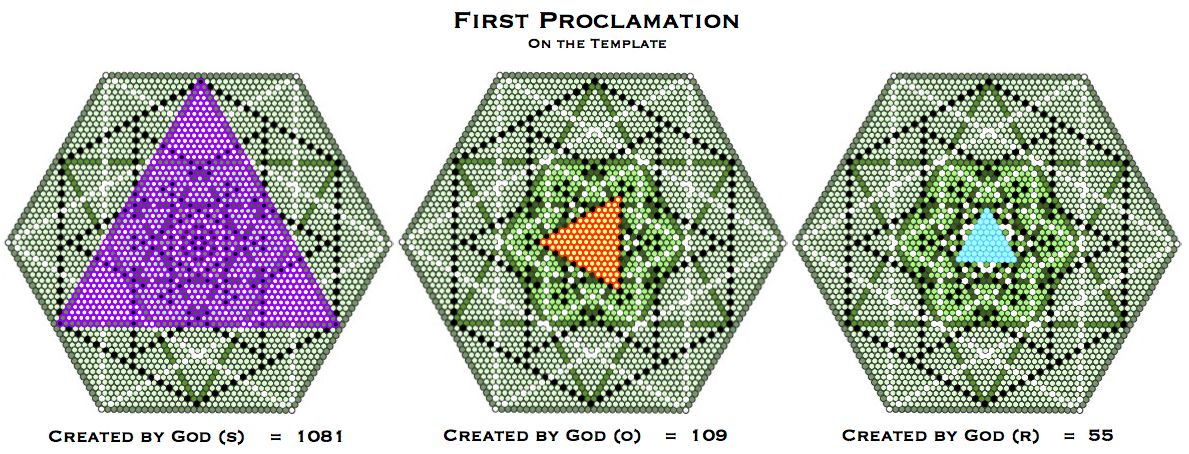
The next statement is even more direct.
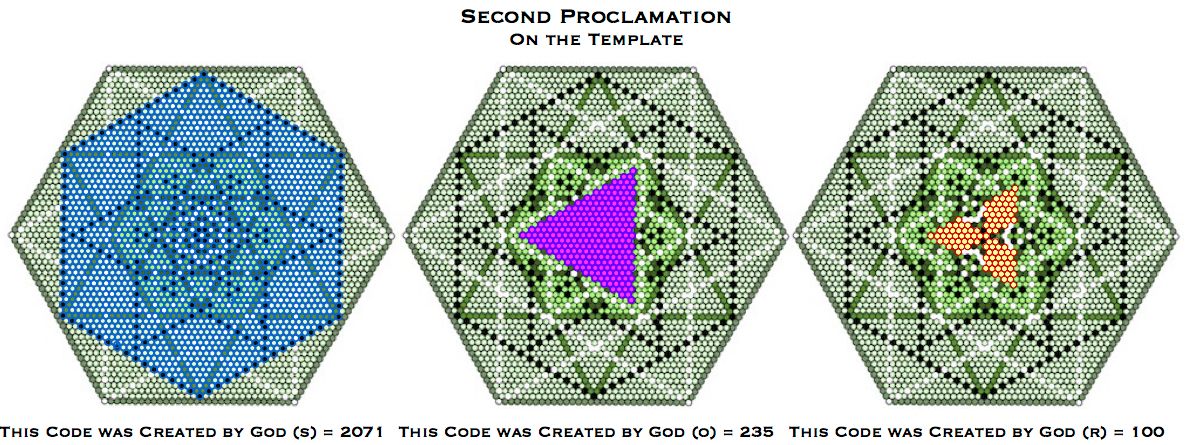
Bill Downie 3/7/20
Notes
1. The standard value of 300 is first found in Genesis 41.38. In Geness 1.2 the words are written as V'ruach Elohim/'and the spirit of God', which have a gematria of 306.
2. The more usual Ruach HaKodesh/'the Holy Spirit' has a standard value of 623 and can be seen at the bottom of this page, in a magnificent layered sequence of numbers.
3. These are actually semi-regular pentagons.
4. This was discovered by Richard McGough. Much of the geometry within the Hebrew Genesis 1.1 (Biblia Hebraica) was discovered by Vernon Jenkins. Other researchers have recently made important contributions to this work. For some of my own findings in the Hebrew Bible's opening verses please see The Alpha and the Omega.
5. All of these synonymous names for God, all using the definite article ('the' or 'O'), seem to have been grouped here. In the NIV, the English title 'Almighty God' is found rather than the less common 'The Almighty God'. On the other hand the definite article is found in all three Greek phrases, but the first is usually translated as 'God', rather than 'the God'. So I have assumed there is a little leeway given in adding and subtracting the definite article. Interestingly 'the God' (s) = 284, which is also Theos/God (s).
